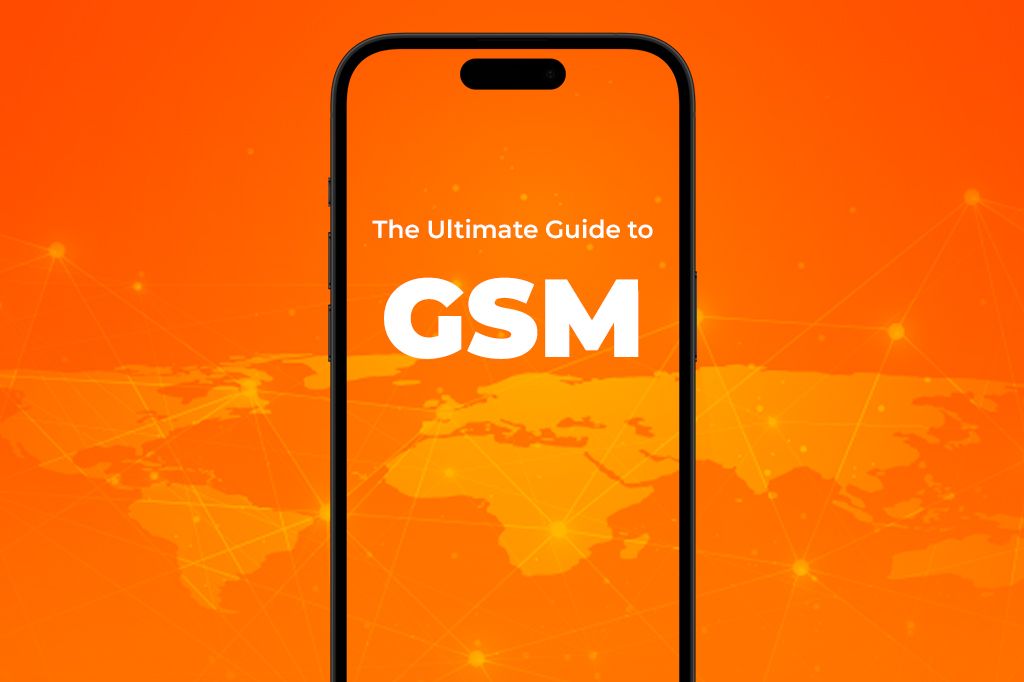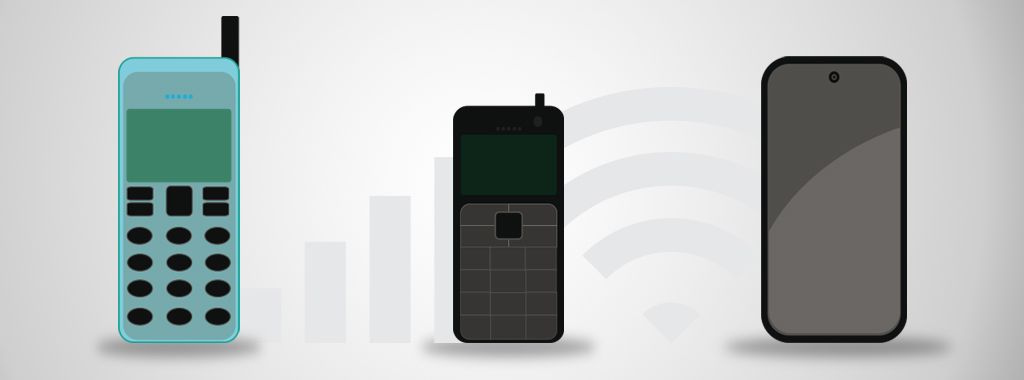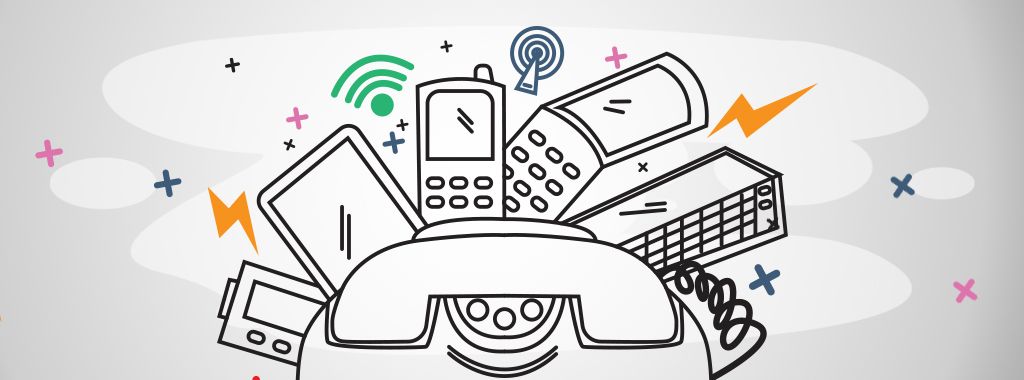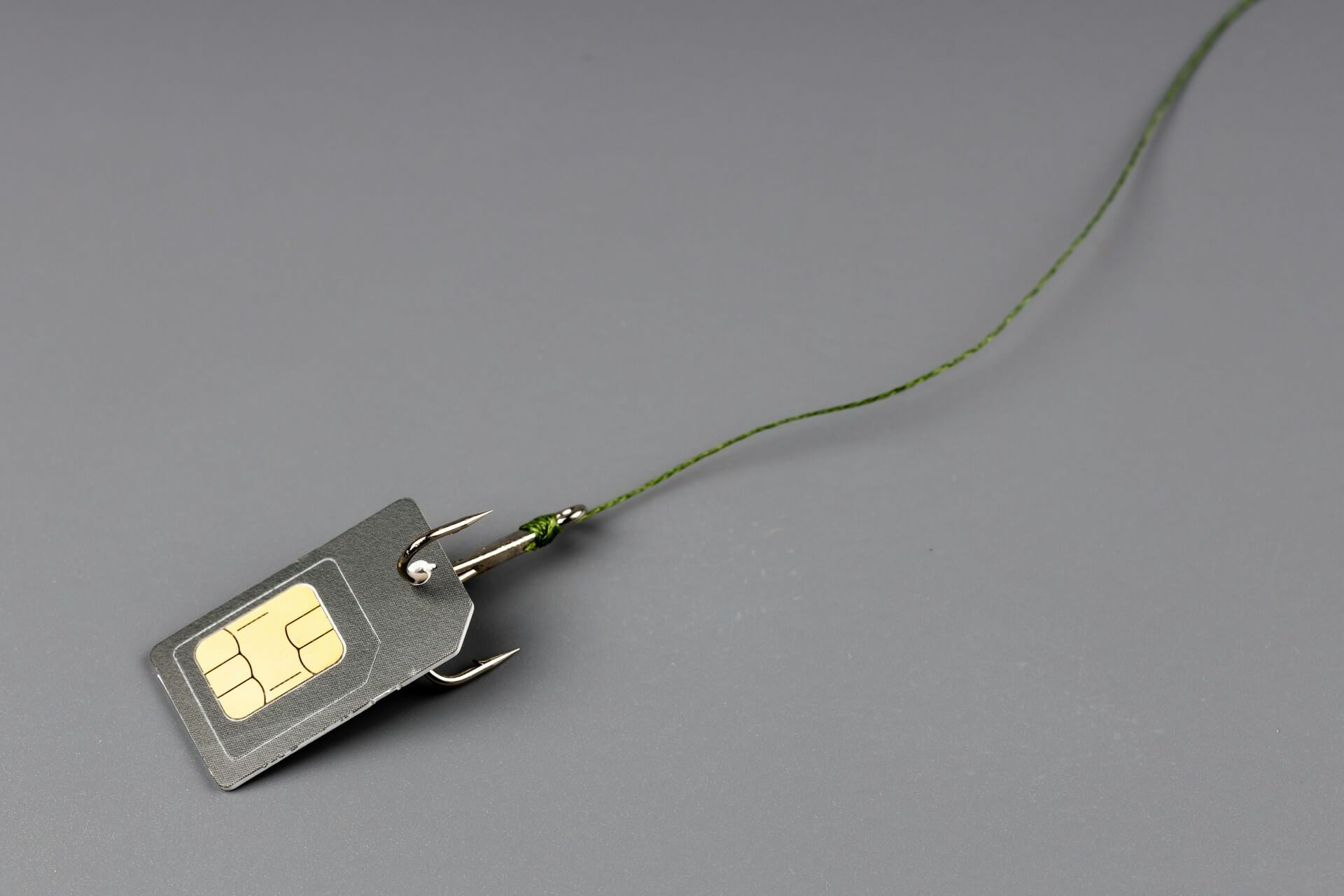Have you ever wondered how your mobile phone magically connects you to people miles away? Long before the super-fast internet we use today, there was a groundbreaking technology that started it all. This technology helped billions of people talk and text each other across the globe. We’re talking about GSM. But what is GSM, really, and why was it so important?
Get ready to discover the simple story behind the technology that built the foundation for the mobile world we know today! This guide will walk you through everything you need to understand about GSM in easy terms.

What is GSM?
GSM means Global System for Mobile Communications. It’s basically a digital standard, a set of rules and technologies, that mobile phones and networks use to talk to each other. Its key features are:
-
Digital: Unlike older analog systems (like fuzzy radio), GSM uses digital signals. This means clearer calls and less static.
-
Calls and Texts: GSM was primarily designed for voice calls and simple text messages (SMS - Short Message Service).
-
SIM Cards: One of the most recognizable features of GSM is the SIM (Subscriber Identity Module) card. This tiny chip stores your account information. You can insert your SIM card into different GSM phones, and your number and service plan go with it.
-
Global Standard: It became the most widely adopted mobile standard in the world, used across Europe, Asia, Africa, and many other regions.
Imagine a busy highway. How do you fit lots of cars on it without them crashing? GSM uses a system called TDMA (Time Division Multiple Access). Think of the radio frequency (the highway) available to the network. TDMA divides this frequency into small time slots. Each phone call gets its own tiny slice of time to ‘talk’ on that frequency. It happens so fast that it sounds like a continuous conversation to you. It’s like many people quickly taking turns speaking on the same radio channel.
GSM also operates on specific frequency bands, which are like dedicated radio channels assigned by governments for mobile use. Common GSM bands include 900 MHz and 1800 MHz in many parts of the world, and 850 MHz and 1900 MHz primarily in the Americas. Your phone needs to support the bands used in your area or the area you travel to.
The Evolution of GSM
Mobile phones weren’t always as smart or connected as they are today. GSM played a massive role in getting us here. Let’s look at its journey.

Smartphone Vectors by Vecteezy
Early mobile networks
Before GSM, in the 1980s, Europe had a jumble of different analog mobile phone systems (often called 1G, or First Generation). A phone from one country wouldn’t work in another. Calls weren’t very clear, and security was weak. It was all confusing and limited.
European countries realized they needed a single, unified standard to make mobile communication better and allow people to use their phones across borders. That’s why GSM was born –to create a Global System that everyone could use. It was designed to be digital from the start, offering better quality and security.
Key milestones (2G, GPRS, EDGE, and UMTS)
-
GSM (2G - Second Generation): This is the original standard we’ve been discussing. Launched in the early 1990s, it focused on digital voice calls and SMS text messages. It was a massive improvement over 1G.
-
GPRS (General Packet Radio Service): Often called “2.5G,” GPRS was an upgrade to GSM networks. It allowed for “always-on” data connections, though speeds were quite slow (think very basic mobile web browsing or email).
-
EDGE (Enhanced Data rates for GSM Evolution): Another upgrade, sometimes called “2.75G.” EDGE offered faster data speeds than GPRS, making mobile internet a bit more usable, but still much slower than what we have now.
-
UMTS (Universal Mobile Telecommunications System): This marked the beginning of 3G (Third Generation). While technically a different technology system, UMTS was designed as the evolutionary path from GSM. It offered much faster data speeds, enabling video calls and better mobile internet. Many 3G networks were built upon the core infrastructure established by GSM.
Understanding what GSM is helps us appreciate how these later technologies built upon its success.
Transition from GSM to modern networks (4G LTE & 5G)
As our need for data grew – for streaming, apps, social media, and more – even 3G wasn’t fast enough. This led to the development of 4G LTE (Long-Term Evolution) and now 5G (Fifth Generation) networks. These technologies are vastly different from GSM, using more advanced techniques (like OFDMA, discussed later) to deliver incredibly fast speeds and support many more connected devices simultaneously.
As mobile networks evolved from GSM to the powerful 4G LTE and 5G technologies, so did the way we connect. The eSIM (embedded SIM) represents the next milestone in this evolution, eliminating the need for physical SIM cards and offering a smoother, faster, and more flexible way to stay connected. Just as GSM laid the foundation for mobile communication, eSIM is shaping the future.

How GSM Networks Are Structured
A GSM network isn’t just your phone and a cell tower. It’s a complex system with several key parts working together. Let’s break it down simply:
-
Mobile Devices (Mobile Station - MS): This is your phone, tablet, or any device that connects to the network. The crucial part here is the SIM card, which identifies you (the subscriber) to the network. Without a valid SIM, your phone usually can only make emergency calls.
-
Base Station Subsystem (BSS): This part connects your phone wirelessly to the main network. It has two main components:
- Base Transceiver Station (BTS): These are the cell towers you see everywhere. They contain the radios and antennas that transmit and receive signals directly to and from your phone. Each tower covers a specific area called a ‘cell’.
- Base Station Controller (BSC): Think of this as a manager for several cell towers (BTSs). It controls things like channel allocation (assigning frequencies and time slots) and ‘handovers’ – when your phone seamlessly switches from one tower to another as you move without dropping the call.
-
Network Switching Subsystem (NSS): This is the ‘brain’ or core of the GSM network. It manages calls, messages, and keeps track of users. Key parts include:
- Mobile Switching Center (MSC): The central coordinating element. It routes calls to the right place (whether to another mobile phone or to the regular landline phone network), handles messaging services (SMS), and communicates with databases to check subscriber information.
- Home Location Register (HLR): A large database that permanently stores information about every subscriber of that network operator, including their services, permissions, and general location.
- Visitor Location Register (VLR): A temporary database associated with an MSC. When you travel into an area served by a particular MSC, the VLR stores a temporary copy of your information from the HLR. This helps the MSC handle your calls locally without constantly checking the main HLR.
-
Operation and Support Subsystem (OSS): This is the behind-the-scenes part that manages the entire network. It handles network monitoring (making sure everything is working), maintenance, software updates, network configuration, fault detection, and security management. It ensures the network runs smoothly and reliably.
So, when you make a call, your phone (MS) talks to the nearest cell tower (BTS), which is managed by a BSC. The BSC connects to the MSC in the NSS. The MSC checks the VLR/HLR to verify your subscription and then routes your call to the destination, whether it’s another mobile user (going through their network parts) or someone on a landline.
Features & Advantages of GSM
GSM became so popular for several good reasons. Here are some of its main benefits:
-
International Roaming: This was perhaps GSM’s biggest selling point. Because so many countries adopted the GSM standard, network operators could make agreements allowing their customers to use their phones on other GSM networks when traveling abroad. This made international travel much easier for mobile users.
-
SIM Card Flexibility: The small, removable SIM card was a brilliant idea. It stores your unique subscriber information. This means you can easily switch your phone number and service plan to a new GSM phone simply by moving the SIM card. You weren’t tied to a specific device like in some other systems.
-
Secure Communication (for its time): Compared to older analog systems, GSM offered improved security. It used digital encryption to scramble calls, making it harder for casual eavesdroppers to listen in. While not perfect by today’s standards, it was a significant step up.
-
Widespread Adoption: GSM achieved massive global scale. It became the dominant standard in Europe, Asia, Africa, and Oceania, and was also widely used in the Americas. This huge user base created economies of scale, making phones and network equipment cheaper and more available.
-
Compatibility with Early IoT Devices: The simplicity and widespread coverage of GSM (especially with GPRS for basic data) made it suitable for early Machine-to-Machine (M2M) communication and Internet of Things (IoT) devices. Think of things like smart meters sending readings, vending machines reporting stock, or basic vehicle tracking systems.

Photo by Andrey Metelev on Unsplash
GSM vs. CDMA vs. LTE: Key Differences
GSM wasn’t the only mobile technology out there. In some parts of the world, particularly North America and parts of Asia, another 2G/3G technology called CDMA was also popular. And today, LTE (4G) and 5G are the dominant standards. Here’s a simple comparison:
| Feature | GSM | CDMA | LTE (4G) / 5G |
|---|---|---|---|
| Technology | TDMA-based (Time Division) | CDMA-based (Code Division) | OFDMA-based (Orthogonal Frequency) |
| SIM Usage | Uses removable SIM cards | Often No SIM (linked to carrier/phone) | Uses SIM cards (physical or eSIM) |
| Coverage | Worldwide adoption (historically) | Limited mainly to Americas, some Asia | Global standard now and future |
| Call & Data | Supported both (data slow) | Sometimes struggled with simultaneous use | Designed for efficient voice+data (VoLTE) |
| Future | Phasing out with 4G/5G rollout | Mostly obsolete / shut down | Current and future technology |
Security in GSM
When GSM was designed in the late 1980s, security was a consideration, especially compared to the easily scannable analog networks.
GSM introduced encryption to protect voice calls. The main algorithms used were A5/1 and later A5/2. These algorithms scrambled the conversation between the phone and the cell tower, making it difficult for someone with a simple radio scanner to listen in. Authentication processes were also used to verify the SIM card with the network, helping prevent cloning (though not perfectly).
Vulnerabilities and security concerns
While an improvement, GSM security wasn’t foolproof, especially by modern standards.
-
Weak Encryption: The A5/1 algorithm was later found to have weaknesses that could potentially be broken with enough computing power. A5/2 was even weaker and deliberately designed to be easily crackable by governments.
-
Tower-to-Network Link: Often, the encryption only applied between the phone and the cell tower (BTS). The link from the tower back into the core network wasn’t always encrypted, creating a potential weak spot.
-
IMSI Catchers: Devices known as “IMSI Catchers” or “Stingrays” can pretend to be legitimate cell towers, tricking phones into connecting to them. This allows attackers to intercept calls/texts or track a user’s location.
-
Lack of Mutual Authentication (in original spec): Initially, only the network authenticated the phone/SIM. The phone didn’t always authenticate the network, making it vulnerable to fake tower attacks.
Are modern GSM networks protected?
It’s important to remember that GSM itself is old technology. While some basic GSM services might still operate, most voice and data traffic today runs over 3G, 4G (LTE), and 5G networks. These newer standards have much stronger security features:
-
Stronger Encryption: Algorithms like AES are used in 4G/5G, which are much more robust.
-
Mutual Authentication: Both the device and the network authenticate each other, making fake tower attacks harder.
-
End-to-End Security: Efforts are made to secure communications further into the network core.
-
Regular Updates: Security protocols are continuously reviewed and updated.
So, while GSM had known security flaws, the networks most people use daily (4G/5G) offer much better protection.
Limitations of GSM
Despite its success, GSM had its drawbacks, especially as technology progressed:
-
Interference Issues: Being based on radio waves, GSM signals could be affected by physical obstructions like buildings, hills, or even bad weather. This could lead to dropped calls or poor signal quality in certain areas. Electrical interference from other devices could also sometimes cause issues.
-
Limited Data Speeds: This is GSM’s biggest limitation by today’s standards. While GPRS and EDGE upgrades added data capabilities, the speeds were very slow compared to 3G, let alone 4G or 5G. Streaming video or using complex apps was simply not feasible on a pure 2G GSM connection. Understanding what GSM inherently means, recognizing it was built for voice first, data second.
-
Need for Repeaters in Weak Signal Areas: In areas with poor natural coverage (like deep inside large buildings or remote rural locations), signal boosters or repeaters were often needed to amplify the GSM signal and make service usable. This added complexity and cost to ensuring coverage everywhere.
-
Capacity Limits: The TDMA structure, while clever, had limits on how many users could share a frequency in a given area. In very densely populated locations, the network could sometimes become congested during peak hours.
These limitations drove the need for the evolution to 3G, 4G, and 5G, which were designed to overcome these issues, particularly regarding data speed and capacity.
GSM in the U.S. and Global Usage
Historically in the U.S., AT&T and T-Mobile were the primary GSM carriers. However, this is rapidly changing. Both carriers, like others globally, are in the process of shutting down their older 2G (GSM) and 3G networks. They need the radio frequency space (spectrum) used by these older technologies to build out their faster, more efficient 4G LTE and 5G networks. While some minimal GSM capability might linger for specific M2M/IoT uses or roaming agreements temporarily, active consumer use is vanishing. It’s best to assume consumer-focused GSM networks are effectively gone or disappearing very soon in the US.
The U.S. situation reflects a global trend. Countries across Europe, Asia, and Australia are also actively shutting down their 2G and 3G networks. The timeline varies by country and carrier, with some having already completed the shutdowns and others planning them over the next few years.
The reasons are consistent: reclaim valuable spectrum for 4G/5G, reduce the cost of maintaining old networks, and encourage users onto more modern, efficient technology.
For most people using smartphones made in the last 5-7 years, this shutdown likely won’t affect them directly. Modern phones predominantly use 4G LTE and 5G. However, here’s what you need to do if GSM networks shut down:
:
-
Check Your Phone: If you have a very old phone (a basic feature phone from 10+ years ago, perhaps), it might only support 2G/3G. Once those networks are shut down in your area, that phone will lose service (except potentially emergency calls). You would need to upgrade to a phone that supports 4G LTE (and ideally VoLTE – Voice over LTE) or 5G.
-
Check IoT Devices: Some older smart home devices, alarm systems, or vehicle trackers might rely on 2G/3G networks. Users of these devices may need to check with the service provider or manufacturer about upgrade options or potential service loss.
-
Travelers: While international roaming was a GSM strength, as networks shut down globally, relying on just 2G/3G for roaming becomes less viable. Modern phones supporting multiple 4G/5G bands are essential for reliable international connectivity.

Photo by Christopher on Unsplash
Upgrade from GSM to the Future with Yoho Mobile eSIM!
Just as GSM changed mobile communication, Yoho Mobile’s eSIM takes it to the next level. Forget hunting for local SIM cards or worrying about compatibility with aging networks. Yoho Mobile offers seamless connectivity using modern 4G and 5G networks around the world, all through the convenience of an eSIM. No physical SIM swaps—just instant, global connectivity wherever you go.
Stay connected while you travel—try Yoho Mobile’s free eSIM trial and get instant access to mobile data in over 70 countries. No SIM card, no contracts—just a quick setup and you’re online in minutes.
If you want to get your eSIM plan afterwards, use the code YOHO12 at checkout for a 12% discount!
